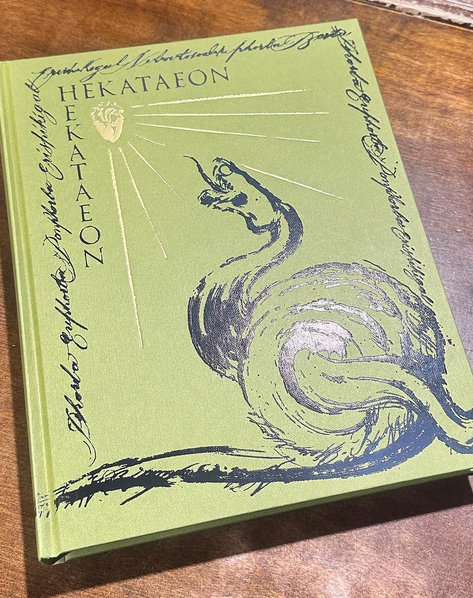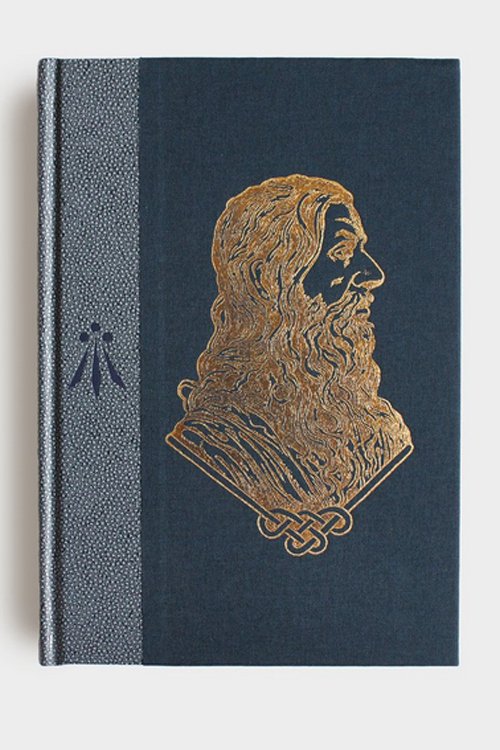

Taro as Colour
In 1977, a series of 78 strange enamel works were exhibited in a small gallery in Cornwall. The vibrant images were modestly grouped together in five large frames. For the curious viewer the artist provided a page of explanation, affirming that these ‘psycho-morphological’ studies were, in fact, designs for a Taro. Within a few weeks, the exhibition was gone.

Decad of Intelligence
Building on Colquhoun’s work with the kabbalah, the Decad of Intelligence was developed during the 1970s and is based on the list of sephirotic intelligences as set out in the Sepher Yetzirah.

Into the Mylar Chamber
Between 1968 and 1971, in a loft on New York’s Jefferson Street, the poet, photographer and filmmaker Ira Cohen created some of the most mythic images of the late 1960s.

Torn Letters of Otherness
This first volume, borne from ideas that came to light while communicating with each other, looks at the notion of absence and the first word to be spoken: the alogos. Largely in response to the work of Chumbley and Azoetia, the first word is commonly referred to as the announcement of Self: I.

Being & Non-Being in Occult Experience Volume 3: Kenneth Grant and the Vulture’s Cry
This volume will explore many of the key notions in Kenneth Grant’s Typhonian Trilogies, in particular aspects of his occult philosophy that were more salient in his later volumes

Being & Non-Being in Occult Experience Volume 2: The Chiasmata of Austin Osman Spare
This volume will be an opportunity to experience the writings and art of Austin Osman Spare, in particular, The Book of Pleasure: The Psychology of Ecstasy

Being & Non-Being in Occult Experience Volume 1: The Book of the Law
In Volume I, the author, in his participatory epistemological encounter with Liber AL vel Legis, writes the Abyss into manifestation by transforming speech acts into magickal acts; moving from Idea to Form and from Form to Idea in a circular, bidirectional fashion.

A Druid in Psychologist’s Clothing
Imagine a man who influenced the likes of Alan Watts, was a friend of Krishnamurti, whose work was lauded by Henry Miller, and had the audacity to challenge the great psychiatrist, C.G. Jung, during one of Jung’s own seminars.

Queen of the Seven Crossroads
In Queen of the Seven Crossroads, history and myth come together to create and continuously develop the definitions and the interpretations about who or what the Queens of Quimbanda are.

Maria de Padilla: Queen of Souls
A personal, practical, and historical work, Maria de Padilla: Queen of the Souls is a detailed account of the life and death of the Spanish queen María de Padilla, her rise to popularity in the witchcraft of Spain and Portugal, and her later migration with the exiled witches to Brazil where she would become the queen of the souls in Quimbanda.

Daemonology
In Dæmonology: An Introduction With a Selection of Texts, Humberto Maggi brings together numerous threads into one cohesive whole, addressing the diverse uses of the concept of the intermediary spirit in the history and practice of Magic, and its correlates in other cultures.

Kenneth Grant: A Bibliography
With a substantial Introduction by Henrik Bogdan surveying the development of Grant’s published work, a Preface by Steffi Grant and a Foreword by Martin P. Starr, this book is sure to become the standard volume of reference for details of Grant’s work.

Servants of The Star & The Snake
Servants of the Star & the Snake is a collection of eighteen essays by fourteen different writers on the work of Kenneth and Steffi Grant.

Alchemy Rising
In The Green Book, Heliophilus shows how to practically confect spagyrical Tinctures, Elixirs, the true Primum Ens, Plant Magisteries and the Quintessence. Also covered are the Plant Stone of Hollandus, the Plant Phoenix, the Quintessence of Blood and the Homunculus.

The Serpent Ikons: A Sorcerous Distortion of the Tarot de Marseille Major Arcana
The Serpent Ikons: A Sorcerous Distortion of the Tarot de Marseille Major Arcana is a card deck, philosophical commentary, and grimoire; combining at the very heart of its creation primal art, writing, and magickal practice.

De Occulta Philosophia: Volume 4 - The Fourth Book
This final section of "The Three Books of Occult Philosophy" includes new translations of extracts from Agrippa's work "De Incertitudine et Vanitate Scientiarum" (1530) and the potentially apocryphal "Liber Quartus de Occulta Philosophia" (1559), which also contains the Heptameron, or Elementa Magica de Petri de Abano.

De Occulta Philosophia: Volume 3 - Ceremonial Magic
Agrippa's unique aspects in this book include his fluid use of terminology, moving between 'God' and 'the gods,' and his emphasis on silent contemplation as the best form of prayer.

De Occulta Philosophia: Volume 2 - Celestial Magic
Book Two of Agrippa's work, "Celestial Magic", explores the celestial realm and can be divided into two parts.

De Occulta Philosophia: Volume 1 - Natural Magic
In "Natural Magic," Agrippa discusses how virtue, or power and energy, is present in everything and flows down from the divine to the physical world. He believed that matter and mind are not separate but part of a single substance.
